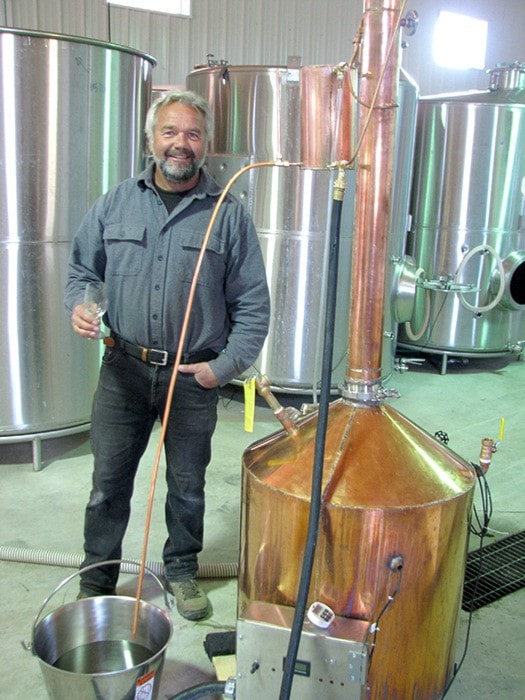“Still crazy after all these years!” I called out to Skimmerhorn Winery owner and winemaker Al Hoag when I entered the winery the other day. But more about that punful greeting in a moment.
It hardly seems possible that more than a decade has passed since Al and Marleen Hoag sold their fruit orchard in Canyon, a few kilometres southeast of Creston. Or that it was the coincidence of a 20-acre property in Erickson coming for sale that made them consider a move into the wine business.
The Creston Valley wasn’t home to a commercial vineyard at the time, and the few hobby growers that I know of had planted mainly hybrids or juice grapes, like Concords. Personally, I was excited when I learned the Hoags were planting a vineyard. I knew them only by reputation — they were well-respected fruit farmers who had run a successful operation. Al’s dad was an orchardist, too, so a family pedigree was in place.
Fast forward to 2013. There are now three wineries in the Creston Valley, and another small commercial vineyard directly across the street from Skimmerhorn. The potential is there for expansion, but nothing like we have seen in the Okanagan. Creston Valley is a peculiar mix of topography and microclimates that narrows down the potential for vineyard success to only a few small areas.
Back to my arrival at the winery. Al was monitoring the activity of a new piece of equipment, a copper still that was spewing out crystal clear liquid into a stainless steel bucket on the floor. My lazy plan to try get out to visit the winery this week had turned into a necessity when I learned that Skimmerhorn had added a still to its collection of equipment.
So once again the Hoags are groundbreakers. There are no other stills — at least of the legal sort — in the area. What is its purpose? Al says he and consulting winemaker Mark Rattray (who might be returning for a few weeks this fall from his home in New Zealand) had talked before about making a port-style wine. High-alcohol (18-22 per cent, typically) dessert wines are made by stopping fermentation of grape juice early, before the sugars have all been converted to alcohol. The addition of alcohol stops the fermentation process and also serves to preserve the juice.
There was also another reason, Al said, to acquire a still (made in the U.S. by the nicely-named Revenoor Company). He had a quantity of wine that developed an unusually high content of wine diamonds, or tartrates, and he decided he didn’t want to sell it. The options were to dump the wine or turn it into alcohol.
So the still was brought in and Al, with a friend, developed an electronic control system to maintain accurate temperatures inside the still, where three electric heating elements heat the grape juice to a point where the alcohol begins to boil off.
As we talked, Al produced a wine-tasting glass, then bent over to collect a half-ounce sample from the steady stream emitting from a small copper line.
I had been forewarned, so I didn’t take a deep sniff, as I do with wine. The liquid, Al said, was 168-proof, or about 84 per cent alcohol. I took a small sip, swirled it around my mouth, then spit the contents through a grate in the concrete floor. Once the burn of the alcohol dissipated I was able to get a sense of a slight, pleasant oiliness and a subtle taste of fruit. To actually drink the distillate, one would cut its strength by adding an equal portion of distilled water, bringing it down to the 40-or-so per cent level that most spirits are sold at (cask-strength single malt whiskies being the most common exception).
My tiny sample would be tempting to refer to as vodka, because it was as clear as water. In fact, it was brandy, the term for a distillate made from wine. The amber colour we associate with brandy comes from contact with oak when it is aged in barrels and/or the addition of caramel colouring.
It will be interesting to see how Al proceeds with the use of his still. It is easy to foresee a product made from cherries, kirsch (really a brandy made from cherry juice) possibly, because Skimmerhorn has plans to make another batch of its successful cherry wine this fall. Time will tell.
Next week: the real reason for my visit to Skimmerhorn Winery was to taste this season’s lineup of wines.
Lorne Eckersley is the publisher of the Creston Valley Advance.
